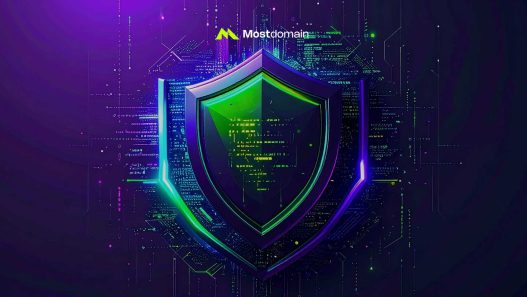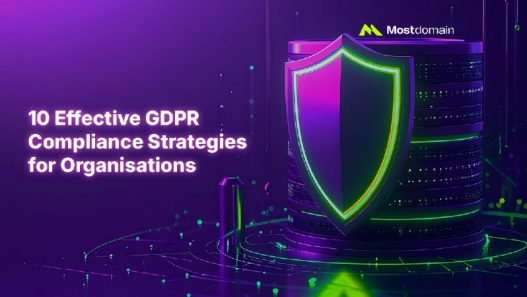Web application security has become the cornerstone of modern business protection, and when I first started working in cybersecurity over a decade ago, attacks were relatively straightforward. Today, I’m witnessing a completely different landscape—one where cybercriminals launch sophisticated attacks every 39 seconds, and the average cost of a data breach has skyrocketed to $4.45 million.
After analyzing hundreds of security incidents and working with organizations across various industries, I’ve learned that web application security isn’t just a technical requirement—it’s a business survival strategy. In this comprehensive guide, I’ll share everything I’ve discovered about protecting web applications from the evolving threat landscape of 2025.
The statistics are sobering: over 75% of all cybercrimes now target web applications, and by 2025, cybercrime is projected to cost businesses globally $10.5 trillion annually. But here’s what gives me hope—with the right knowledge and approach, these attacks are largely preventable.
What Exactly Is Web Application Security?
Think of web application security as the digital equivalent of a comprehensive home security system. Just as you wouldn’t leave your front door unlocked in a high-crime neighborhood, you can’t leave your web applications exposed to the internet without proper protection.
In technical terms, web application security encompasses all the practices, tools, and processes designed to protect web applications from cyber threats throughout their entire lifecycle. This includes everything from secure coding practices during development to runtime protection in production environments.
What makes web applications particularly vulnerable is their public-facing nature. Unlike internal systems protected by firewalls, web apps must be accessible to users worldwide, creating multiple entry points that attackers can exploit.
Why Should You Care About Web App Security in 2025?
The threat landscape has evolved dramatically, and I’ve seen firsthand how quickly a single vulnerability can destroy years of business growth. Let me share some eye-opening trends I’ve observed:
The New Attack Vectors
- API-targeted attacks have increased by 681% in the past year
- AI-powered attacks are becoming more sophisticated and harder to detect
- Supply chain attacks now account for 62% of successful breaches
- Zero-day exploits are discovered at a rate of 20,000+ annually
Here’s a recent example that illustrates the severity: In 2024, a major telecommunications company suffered a breach affecting over 40 million customers due to vulnerable API endpoints. The financial impact? Over $200 million in direct costs, not counting reputation damage.
| Impact Category | Average Cost | Recovery Time |
| Data Breach | $4.45 million | 287 days |
| Ransomware Attack | $5.13 million | 49 days |
| API Security Incident | $6.2 million | 365+ days |
| Compliance Violation | $3.86 million | 180 days |
What Are the Most Common Web Application Vulnerabilities?
Based on my analysis of security incidents and the latest OWASP research, here are the vulnerabilities keeping security professionals awake at night:
The OWASP Top 10: Your Security Roadmap
A01: Broken Access Control (Found in 94% of applications) This vulnerability allows unauthorized users to access restricted data or functionality. I recently investigated a case where attackers accessed admin panels simply by modifying URL parameters.
Real-world impact: Customer data exposure, privilege escalation, system compromise
A02: Cryptographic Failures (Previously “Sensitive Data Exposure”) Weak encryption or improper implementation exposes sensitive data. This includes using outdated algorithms, poor key management, or transmitting data without encryption.
Prevention tip: Always use TLS 1.3 for data transmission and AES-256 for data at rest.
A03: Injection Attacks (Still prevalent despite awareness) SQL injection, NoSQL injection, and command injection remain dangerous. Attackers inject malicious code through user inputs to manipulate databases or execute unauthorized commands.
A04: Insecure Design (New in 2021) This represents design flaws that create vulnerabilities from the ground up. Unlike implementation bugs, these require architectural changes to fix.
A05: Security Misconfiguration (Found in 90% of applications) Default configurations, unnecessary features, and verbose error messages create attack opportunities. This includes misconfigured cloud services, databases, and web servers.
Pro Tip: I always recommend conducting configuration audits quarterly. A simple misconfigured CORS policy once led to a complete data breach I investigated.
A06: Vulnerable and Outdated Components Using components with known vulnerabilities is like leaving windows open in your house. Attackers actively scan for applications using vulnerable libraries.
A07: Identification and Authentication Failures Weak password policies, session management flaws, and broken authentication mechanisms allow attackers to compromise user accounts.
A08: Software and Data Integrity Failures This includes insecure CI/CD pipelines, auto-updates without integrity verification, and dependency confusion attacks.
A09: Security Logging and Monitoring Failures Without proper logging, you’re flying blind. Many organizations only discover breaches months after they occur due to inadequate monitoring.
A10: Server-Side Request Forgery (SSRF) Applications that fetch remote resources based on user input without validation can be tricked into accessing internal systems.
How Can You Implement Effective Security Best Practices?
After implementing security measures across hundreds of applications, I’ve developed a practical framework that consistently delivers results:
Start with Secure Development Practices
Implement Secure Coding Standards
- Use parameterized queries to prevent SQL injection
- Validate and sanitize all user inputs
- Implement proper error handling without exposing sensitive information
- Follow the principle of least privilege
Adopt a Security-First Mindset Every development decision should consider security implications. I’ve seen too many organizations treat security as an afterthought, leading to expensive retrofitting later.
Authentication and Authorization: Your First Line of Defense
Multi-Factor Authentication (MFA) Implementation
- Deploy MFA for all user accounts, especially administrative ones
- Use hardware tokens for high-privileged accounts
- Implement risk-based authentication for suspicious activities
Access Control Best Practices
- Design role-based access control (RBAC) systems
- Regularly audit user permissions
- Implement session management with proper timeouts
- Use JWT tokens with appropriate expiration times
Input Validation and Data Protection
I cannot stress this enough: never trust user input. Here’s my approach:
Input Validation Framework
- Whitelist approach: Define what’s acceptable rather than what’s not
- Server-side validation: Never rely solely on client-side validation
- Context-aware encoding: Different contexts require different encoding methods
- Regular expression validation: Use carefully crafted regex patterns
Data Encryption Strategy
- Encrypt sensitive data at rest using AES-256
- Use TLS 1.3 for data in transit
- Implement proper key management with rotation policies
- Consider field-level encryption for highly sensitive data
Security Testing: Catching Issues Before Attackers Do
I recommend implementing multiple testing approaches:
| Testing Type | When to Use | Key Benefits |
| SAST | During development | Early vulnerability detection |
| DAST | Pre-production | Runtime vulnerability discovery |
| IAST | Integration testing | Real-time analysis with context |
| Penetration Testing | Quarterly | Human-driven threat simulation |
Which Security Tools Should You Consider?

Based on my experience evaluating security tools, here are the categories and specific recommendations:
Web Application Firewalls (WAF)
A quality WAF acts as your application’s bodyguard, filtering malicious traffic before it reaches your servers.
Top-tier solutions I recommend:
- Cloudflare WAF: Excellent for global applications with strong DDoS protection
- AWS WAF: Perfect for AWS-hosted applications with tight integration
- F5 Advanced WAF: Enterprise-grade with advanced bot protection
Vulnerability Scanning Tools
Regular scanning helps identify security gaps before attackers do.
Open-source options:
- OWASP ZAP: Free, powerful, and regularly updated
- Nikto: Excellent for web server scanning
- SQLmap: Specialized for SQL injection testing
Commercial solutions:
- Burp Suite Professional: Industry standard for manual testing
- Qualys WAS: Comprehensive vulnerability management
- Rapid7 InsightAppSec: Strong integration with DevOps workflows
Code Analysis Platforms
Static analysis tools help identify vulnerabilities in your source code.
My go-to recommendations:
- SonarQube: Excellent for code quality and security
- Checkmarx: Advanced SAST with low false positives
- Veracode: Comprehensive application security platform
Note: The best security tool is the one your team will actually use consistently. I’ve seen expensive enterprise solutions gather dust because they were too complex for the development team.
How Do You Build a Security Implementation Roadmap?
Creating an effective security implementation strategy requires careful planning and phased execution. Here’s the roadmap I use with my clients:
Phase 1: Assessment and Planning (Weeks 1-4)
Security Audit Checklist
- Inventory all web applications and their components
- Identify sensitive data flows and storage locations
- Document current security controls
- Assess compliance requirements (GDPR, HIPAA, PCI-DSS)
- Evaluate existing security tools and processes
Risk Prioritization Matrix
| Risk Level | Probability | Impact | Action Required |
| Critical | High | High | Immediate remediation |
| High | Medium | High | 30-day timeline |
| Medium | Low | Medium | 90-day timeline |
| Low | Low | Low | Monitor and review |
Phase 2: Quick Wins (Weeks 5-8)
Focus on high-impact, low-effort improvements:
- Deploy WAF with basic rule sets
- Implement HTTPS across all applications
- Enable security headers (HSTS, CSP, X-Frame-Options)
- Set up basic logging and monitoring
- Patch known vulnerabilities in dependencies
Phase 3: Core Security Implementation (Weeks 9-20)
Security Control Implementation
- Integrate SAST/DAST tools into CI/CD pipelines
- Implement comprehensive input validation
- Deploy advanced authentication mechanisms
- Set up incident response procedures
- Train development teams on secure coding
Phase 4: Advanced Security and Monitoring (Weeks 21-26)
- Deploy behavioral analysis and anomaly detection
- Implement advanced threat hunting capabilities
- Set up automated response mechanisms
- Conduct regular penetration testing
- Establish security metrics and KPIs
Moving Forward: Your Security Journey Starts Now
I’ve shared decades of experience condensed into this guide, but remember—security isn’t a destination; it’s an ongoing journey. The threat landscape continues evolving, and your security posture must evolve with it.
Your immediate next steps:
- Conduct a security assessment of your current applications
- Prioritize vulnerabilities based on risk and business impact
- Implement quick wins to improve your security posture immediately
- Develop a long-term strategy that aligns with your business goals
- Invest in team training because people are your strongest security asset
The investment you make in web application security today will pay dividends in protected customer data, maintained business reputation, and regulatory compliance. More importantly, it will give you peace of mind knowing your applications can withstand the sophisticated attacks of 2025 and beyond.
Remember, every security measure you implement makes your applications less attractive to attackers. In cybersecurity, we often say that you don’t need to be completely bulletproof—you just need to be more secure than the next target.
References
- OWASP Foundation. (2021). “OWASP Top 10 Web Application Security Risks.”
- Cloudflare. (2024). “Web Application Security Learning Center.”
- Black Duck Software. (2024). “Web Application Security and Testing Guide.”
- F5 Networks. (2025). “Web Application Security Best Practices.”
- Rapid7. (2024). “Web Application Security Fundamentals.”
- Legit Security. (2025). “Web Application Security Requirements and Best Practices.”
- Jit Security. (2024). “Top Web Application Security Tools.”
- PortSwigger. (2024). “Web Application Security Testing & Scanning.”
- Imperva. (2023). “OWASP Top 10 Vulnerabilities Guide.”
- Check Point Software. (2024). “OWASP Top 10 Web Application Security Vulnerabilities.”





















